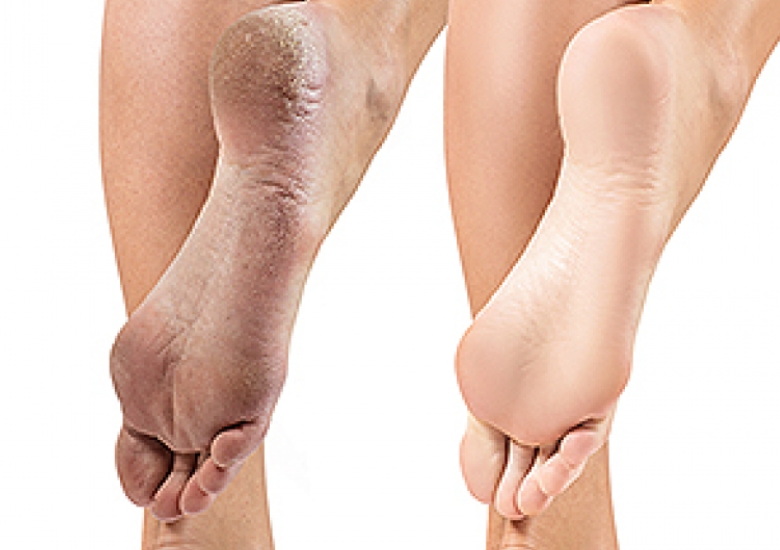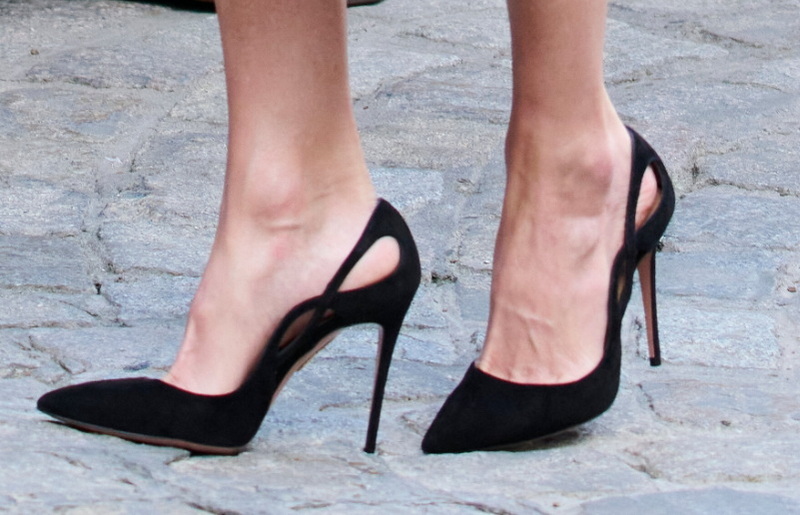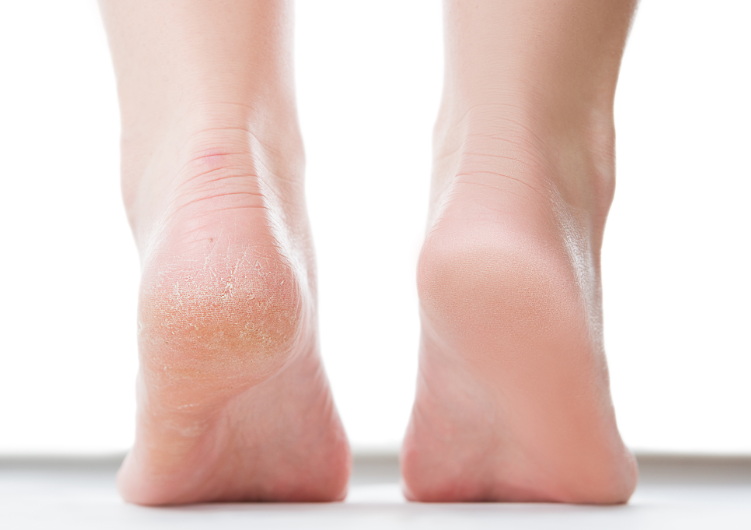Content Menu
● Understanding Cracked Heels
● Common Causes of Cracked Heels in Women
>> 1. Lack of Moisture
>> 2. Prolonged Standing
>> 3. Open-Heeled Footwear
>> 4. Obesity
>> 5. Aging
>> 6. Vitamin Deficiencies
>> 7. Medical Conditions
● Symptoms of Cracked Heels
● Home Remedies for Cracked Heels
>> 1. Moisturize Regularly
>> 2. Soak and Exfoliate
>> 3. Use Petroleum Jelly
>> 4. Try Natural Oils
>> 5. Wear Proper Footwear
● Medical Treatments for Cracked Heels
● Preventing Cracked Heels
● When to See a Doctor
● The Impact of Cracked Heels on Women's Lives
● Conclusion
● Frequently Asked Questions (FAQ)
>> 1. Are cracked heels more common in women than in men?
>> 2. Can pregnancy cause cracked heels?
>> 3. How long does it take to heal cracked heels?
>> 4. Can cracked heels be a sign of a more serious health condition?
>> 5. Are there any specific dietary changes that can help prevent cracked heels?
● Citations:
Cracked heels, also known as heel fissures, are a common foot problem that affects many women. These unsightly and sometimes painful cracks in the skin of the heel can be both a cosmetic concern and a health issue. In this comprehensive article, we'll explore the causes, symptoms, and treatments for cracked heels in women, as well as prevention strategies to keep your feet smooth and healthy.

Understanding Cracked Heels
Cracked heels occur when the skin around the rim of the heel becomes dry, thick, and callused. As pressure is applied to the fat pad under the heel, the skin can split, leading to cracks or fissures. These cracks can range from minor, superficial splits to deep, painful fissures that may bleed and become infected if left untreated.
Common Causes of Cracked Heels in Women
Several factors contribute to the development of cracked heels in women:
1. Lack of Moisture
The most common cause of cracked heels is a lack of moisture. The skin on our heels has fewer oil glands compared to other parts of the body, making it prone to dryness[1]. Women who don't moisturize their feet regularly are more likely to develop dry, cracked skin on their heels.
2. Prolonged Standing
Women who spend long hours standing, especially on hard surfaces, are at a higher risk of developing cracked heels. The constant pressure on the heel pad can cause the skin to expand sideways and crack[2].
3. Open-Heeled Footwear
Wearing open-back shoes or sandals frequently can increase the risk of cracked heels. These types of footwear don't provide adequate support for the heel pad, allowing it to expand and potentially crack the surrounding skin[2].
4. Obesity
Excess weight increases pressure on the fat pad under the heel, causing it to expand sideways. If the skin lacks flexibility, this expansion can lead to cracking[1][2].
5. Aging
As we age, our skin loses elasticity and becomes drier. This natural process can make older women more susceptible to developing cracked heels[2].
6. Vitamin Deficiencies
Women who are deficient in certain vitamins, particularly vitamins C, B3, and E, may be more prone to developing dry, cracked heels[1].
7. Medical Conditions
Certain medical conditions can contribute to the development of cracked heels in women. These include:
- Diabetes
- Thyroid disorders
- Psoriasis
- Eczema
- Athlete's foot
- Sjogren's syndrome[1][3]

Symptoms of Cracked Heels
The symptoms of cracked heels can vary in severity, but typically include:
- Dry, rough skin around the heel
- Thickened, callused skin on the heel
- Visible cracks or fissures in the skin
- Pain or discomfort when walking or standing
- Redness or inflammation around the affected area
- In severe cases, bleeding or infection
Home Remedies for Cracked Heels
Many cases of cracked heels can be treated effectively at home. Here are some remedies to try:
1. Moisturize Regularly
Apply a thick, moisturizing cream or heel balm to your feet at least twice a day, especially after bathing. Look for products containing ingredients like urea, salicylic acid, or alpha-hydroxy acids, which can help soften and exfoliate dry skin[3].
2. Soak and Exfoliate
Soak your feet in warm water for about 20 minutes, then gently exfoliate the dry skin using a pumice stone or foot scrubber. Be careful not to scrub too hard, as this can damage the skin[3].
3. Use Petroleum Jelly
Apply a layer of petroleum jelly to your heels before bed and cover them with socks. This helps lock in moisture overnight[3].
4. Try Natural Oils
Coconut oil, olive oil, or other natural oils can be massaged into the heels to provide moisture and promote healing.
5. Wear Proper Footwear
Choose shoes that provide good support and cushioning for your heels. Avoid open-back shoes or going barefoot for extended periods[2].
Medical Treatments for Cracked Heels
If home remedies don't improve your cracked heels, or if you have a medical condition that contributes to the problem, you may need to seek professional treatment. A podiatrist or dermatologist can provide:
- Prescription-strength moisturizers or ointments
- Debridement (removal of dead skin)
- Treatment for underlying conditions like fungal infections
- Custom orthotics to redistribute pressure on the heels
- In severe cases, liquid bandages or specialized dressings may be applied to protect deep fissures and promote healing[3]
Preventing Cracked Heels
Prevention is key when it comes to maintaining healthy, crack-free heels. Here are some tips to help prevent cracked heels:
1. Moisturize your feet daily, especially after bathing
2. Wear well-fitting, supportive shoes
3. Use a pumice stone regularly to gently exfoliate dry skin
4. Stay hydrated by drinking plenty of water
5. Maintain a healthy diet rich in vitamins and minerals
6. Avoid prolonged exposure to hot water
7. Use a humidifier in dry environments to add moisture to the air
8. Wear socks to bed after applying moisturizer for extra hydration
When to See a Doctor
While most cases of cracked heels can be treated at home, there are instances where medical attention is necessary. Seek professional help if:
- Your cracked heels are severe or painful
- You notice signs of infection (redness, swelling, warmth, or pus)
- You have diabetes or poor circulation
- Home remedies don't improve your condition after several weeks
- You have a medical condition that affects your skin or foot health
The Impact of Cracked Heels on Women's Lives
Cracked heels can have a significant impact on a woman's quality of life. Beyond the physical discomfort, they can cause embarrassment and affect self-esteem, especially during sandal season. Many women may avoid certain activities or limit their footwear choices due to cracked heels. By understanding the causes and implementing proper foot care, women can maintain healthy, attractive feet and prevent the discomfort and inconvenience of cracked heels.
Conclusion
Cracked heels are a common problem for many women, but they don't have to be a persistent issue. By understanding the causes and implementing proper foot care routines, most cases of cracked heels can be prevented or effectively treated at home. Regular moisturizing, gentle exfoliation, and wearing supportive footwear are key steps in maintaining healthy, smooth heels. For severe or persistent cases, don't hesitate to seek professional medical advice. With the right care and attention, women can keep their feet healthy, comfortable, and ready for any occasion.

Frequently Asked Questions (FAQ)
1. Are cracked heels more common in women than in men?
While both men and women can develop cracked heels, women may be more prone to this condition due to factors such as hormonal changes, pregnancy, and wearing open-heeled shoes more frequently. However, the fundamental causes and treatments are similar for both genders.
2. Can pregnancy cause cracked heels?
Yes, pregnancy can contribute to the development of cracked heels. The increased weight and hormonal changes during pregnancy can put extra pressure on the feet and affect skin elasticity, making pregnant women more susceptible to developing dry, cracked heels.
3. How long does it take to heal cracked heels?
The healing time for cracked heels can vary depending on the severity of the condition and the treatment approach. With consistent care, minor cracks may improve within a few days to a week. More severe cases may take several weeks to heal completely. Consistency in treatment and prevention is key to seeing improvement.
4. Can cracked heels be a sign of a more serious health condition?
In some cases, cracked heels can be a symptom of underlying health conditions such as diabetes, thyroid disorders, or autoimmune diseases. If your cracked heels persist despite proper care or are accompanied by other symptoms, it's important to consult a healthcare professional for a thorough evaluation.
5. Are there any specific dietary changes that can help prevent cracked heels?
While there's no specific diet for preventing cracked heels, maintaining overall skin health through nutrition can help. Ensure you're getting enough vitamins A, C, and E, as well as omega-3 fatty acids, which support skin health. Staying well-hydrated by drinking plenty of water is also crucial for maintaining skin moisture and elasticity.
Citations:
[1] https://www.medicinenet.com/why_do_womens_feet_get_dry_and_cracked/article.htm
[2] https://www.scholl.co.uk/blogs/all-about-feet/how-to-avoid-the-most-common-causes-of-cracked-heels
[3] https://www.healthline.com/health/cracked-heel-heal
[4] https://create.vista.com/photos/cracked-heel/
[5] https://www.youtube.com/watch?v=x7sb2Ga3rd8
[6] https://www.youtube.com/watch?v=5b7t0NZTj-8
[7] https://www.health.harvard.edu/diseases-and-conditions/why-are-my-heels-cracked
[8] https://newsnetwork.mayoclinic.org/discussion/mayo-clinic-q-and-a-take-steps-at-home-to-manage-dry-cracked-heels/
[9] https://www.verywellhealth.com/cracked-heels-causes-home-remedies-prevention-and-more-5214946
[10] https://www.istockphoto.com/de/bot-wall?returnUrl=%2Fde%2Fphotos%2Fcracked-heel
[11] https://www.youtube.com/watch?v=36lCX62USRg
[12] https://www.webmd.com/skin-problems-and-treatments/what-to-know-cracked-heels

















